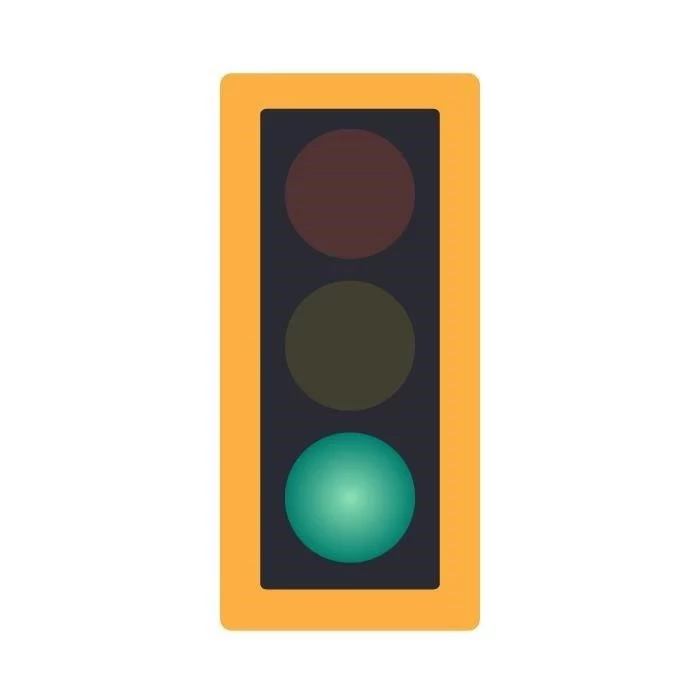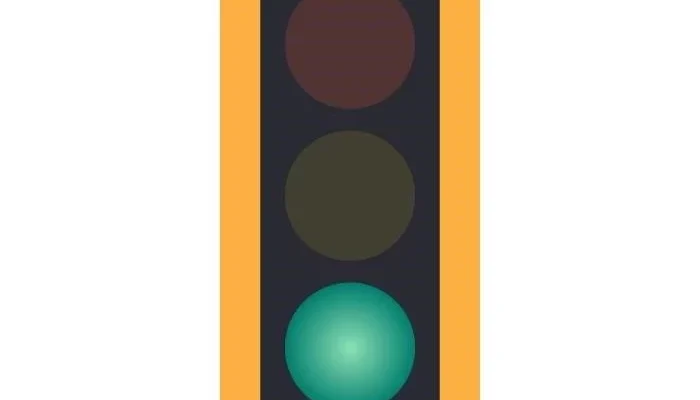In the intricate dance of vehicles and pedestrians, traffic signals play the role of an indispensable choreographer. Among the array of hues and symbols that guide us through intersections, the flashing red light remains a point of confusion and curiosity for many. What exactly does it mean when you encounter this blinking beacon on your route? Let’s delve into the significance of a flashing red light and the rules that accompany it.

- The Basics of Traffic Signals
- Red Light: The Universal Symbol for Stop
- What Does a Flashing Red Light Mean?
- Why a Flashing Red Light?
- Legal Implications and Safety Tips
- The Evolution of Traffic Signals
- Psychology Behind Traffic Signals
- Global Variations and Cultural Impact
- Innovations and the Future of Traffic Management
- Adapting to New Traffic Patterns
- Education and Awareness
- Impact of Emerging Technologies
- Conclusion
The Basics of Traffic Signals
Traffic signals are designed to manage the flow of traffic, ensuring safety and efficiency on the roads. They communicate critical information to drivers and pedestrians, maintaining order at intersections. Each color – red, yellow, and green – conveys a specific message, and they sometimes blink to signal special instructions.
Red Light: The Universal Symbol for Stop
A solid red light is universally understood as a command to stop. However, when the red light begins to flash, the message evolves slightly, requiring drivers to exercise additional caution and understanding.
What Does a Flashing Red Light Mean?
A flashing red light at an intersection essentially functions as a stop sign. Here’s what you should do when you encounter one:
- Stop Completely: Bring your vehicle to a complete stop at the intersection. This is crucial for the safety of all road users.
- Check for Traffic: After stopping, look both ways and assess the situation. Ensure that the path is clear of oncoming vehicles and pedestrians.
- Proceed with Caution: Once you determine it is safe, proceed through the intersection. Always yield to drivers who have the right of way.
Why a Flashing Red Light?
The use of a flashing red light is typically a response to specific traffic conditions. Here are some common scenarios where you might encounter one:
- Low Traffic Periods: During off-peak hours, especially late at night or early morning, intersections may operate on a flashing red to reduce unnecessary stopping.
- Temporary Signals: Roadworks or temporary changes might require a flashing red signal to manage altered traffic patterns.
- Malfunctioning Signals: If a traffic light system is malfunctioning, it may default to a flashing mode to maintain safety until repairs are made.
Legal Implications and Safety Tips
Ignoring a flashing red light can result in traffic violations with potential fines and increased insurance rates. More importantly, it poses a significant risk to safety. Here are some tips to navigate flashing red lights safely:
- Remain Alert: Stay vigilant for changes in traffic lights, and be prepared to stop when approaching intersections with flashing signals.
- Communicate: Use signals to communicate your intentions to other drivers, ensuring a smooth flow of traffic.
- Patience is Key: Avoid rushing through intersections. Taking a few extra seconds to ensure safety is always worth it.
The flashing red light, a seemingly simple signal, carries profound implications for road safety. By treating it as a stop sign and following the necessary procedures, drivers can contribute to a safer driving environment for everyone. Remember, understanding the language of traffic signals is not just about obeying rules; it’s about ensuring the well-being of all who share the road.
Next time you encounter a flashing red light, take a moment to appreciate the role it plays in keeping our roads orderly and safe. After all, in the grand scheme of traffic management, every light and signal has its part to play.
Certainly! Allow me to continue crafting engaging content on the topic.
—
The Evolution of Traffic Signals
Understanding the significance of a flashing red light also requires a brief dive into the evolution of traffic signals themselves. From their inception, traffic signals have been designed to address the ever-changing needs of urban development and the exponential increase in vehicular traffic. The first electric traffic light was installed in Cleveland, Ohio, in 1914, and since then, these signals have evolved from simple devices into sophisticated systems integrated with smart city technologies.
In modern times, traffic signals are often connected to central traffic management systems that can adjust signal timing and patterns based on real-time traffic data. This capability allows for a more dynamic control of traffic flow, which can be crucial in reducing congestion and improving road safety.
Psychology Behind Traffic Signals
Traffic signals, including flashing red lights, are not just about mechanical operations; they also involve psychological principles. By using universal colors and symbols, they tap into innate human reactions. Red, for example, is commonly associated with danger or urgency, prompting a stop. The flashing aspect of a red light introduces an additional layer of urgency, demanding immediate attention and response from drivers.
Understanding these psychological cues is essential for drivers as they navigate the complexities of daily commutes. Acknowledging that these signals are designed based on human cognitive and perceptual patterns can lead to more intuitive and safer driving practices.
Global Variations and Cultural Impact
Traffic signals, while seemingly standardized, can vary slightly across the globe. In some countries, a flashing red light might be accompanied by other signals or signs that provide additional instructions specific to local driving laws. This global diversity highlights the importance of being aware of local traffic rules when driving in international locations.
Culturally, traffic signals also reflect societal attitudes towards order, discipline, and community safety. In regions where traffic discipline is rigorously enforced, adherence to signals is typically higher, leading to smoother traffic flow and fewer accidents.
Innovations and the Future of Traffic Management
With advances in technology, the future of traffic management is poised for transformation. Innovations such as adaptive traffic signals, which adjust in real-time to traffic conditions, and the integration of autonomous vehicles into traffic systems, promise to reduce the occurrences of traffic mishaps significantly. These technologies aim to enhance the efficiency and safety of our roads, paving the way for a future where traffic signals are even more responsive and intelligent.
Moreover, the rise of smart cities is likely to further revolutionize traffic management, with interconnected systems that provide seamless communication between vehicles, infrastructure, and traffic management centers.
In conclusion, a flashing red light at an intersection is more than just a signal to stop; it is a reminder of the intricate system of road safety and management that underpins modern transportation. By understanding and respecting these signals, drivers can contribute to a safer and more efficient road environment for all. As we move towards more advanced traffic systems, staying informed and adaptable will be key to navigating the roads of the future.
So next time you find yourself at an intersection with a flashing red light, take a moment to appreciate the complexity and importance of the signal in guiding you safely on your journey.
body {
font-family: Arial, sans-serif;
line-height: 1.6;
margin: 20px;
}
h2 {
color: #2c3e50;
}
p {
color: #34495e;
}
ul {
list-style-type: square;
margin-left: 20px;
}
Adapting to New Traffic Patterns
As cities grow and traffic patterns become more complex, the role of traffic signals, including the flashing red light, must evolve. Urban planners and traffic engineers work tirelessly to anticipate and adapt to these changes, ensuring that traffic signals meet the needs of modern roadways. This involves studying traffic flow, accident data, and technology trends to implement solutions that enhance safety and efficiency.
Flashing red lights, while rooted in traditional traffic management, are now part of a broader, more dynamic system. They can be integrated with sensors and cameras that provide real-time data, allowing for adjustments based on current traffic conditions. This adaptability ensures that intersections remain safe and functional, regardless of the time of day or the volume of traffic.
Education and Awareness
Despite the technological advancements in traffic management, the effectiveness of traffic signals ultimately relies on driver education and awareness. Public safety campaigns and drivers education programs play a crucial role in ensuring that drivers understand what a flashing red light means and how to respond appropriately.
Moreover, fostering a culture of road safety involves ongoing communication between traffic authorities and the public. This includes clear signage, public service announcements, and community engagement initiatives that emphasize the importance of obeying traffic signals.
Impact of Emerging Technologies
The future of traffic signals, including the flashing red light, is closely tied to the development of emerging technologies. From autonomous vehicles to smart infrastructure, these innovations promise to revolutionize how we navigate our roads. Autonomous vehicles, for instance, rely on a sophisticated array of sensors and algorithms to interpret traffic signals, including flashing red lights, ensuring that they can safely navigate intersections.
Additionally, smart infrastructure involves the integration of traffic signals with a network of connected devices that communicate with each other to optimize traffic flow. This could lead to a reduction in congestion, improved safety, and a more sustainable transportation system overall.
Conclusion
In conclusion, the flashing red light is a vital component of our traffic management system, serving as a universal signal that transcends language and cultural barriers. By understanding its role and responding appropriately, drivers contribute to a safer and more efficient road environment. As technology continues to advance, the flashing red light will remain a key element of traffic control, adapting to new challenges and opportunities in the ever-evolving landscape of urban transportation.
Let us embrace the future of traffic management with open minds and a commitment to road safety. Whether you are a seasoned driver or a newcomer to the roads, understanding the nuances of traffic signals is an essential part of navigating the complexities of modern transportation.


Very useful information presented in an easy-to-digest format. It’s good to know that these signals are there for our safety, especially during times of low traffic.
This article does a great job explaining the significance of a flashing red light. I always wondered why they sometimes blink, and now I understand it functions like a stop sign. Very informative!
This was an enlightening read! I often see flashing red lights but wasn’t sure about the exact rules. The comparison to a stop sign makes it much clearer for me now.
Great article! It’s essential for drivers and pedestrians to know how to react to different traffic signals, and this piece covers the topic well. The advice on stopping completely and checking both ways is crucial.
I never realized that flashing red lights are used during low traffic periods to improve flow. This article provided valuable insights into something I encounter regularly but didn’t fully understand.
I appreciate the clarity in this explanation. The breakdown of what to do when encountering a flashing red light is straightforward and easy to remember. Thanks for sharing!